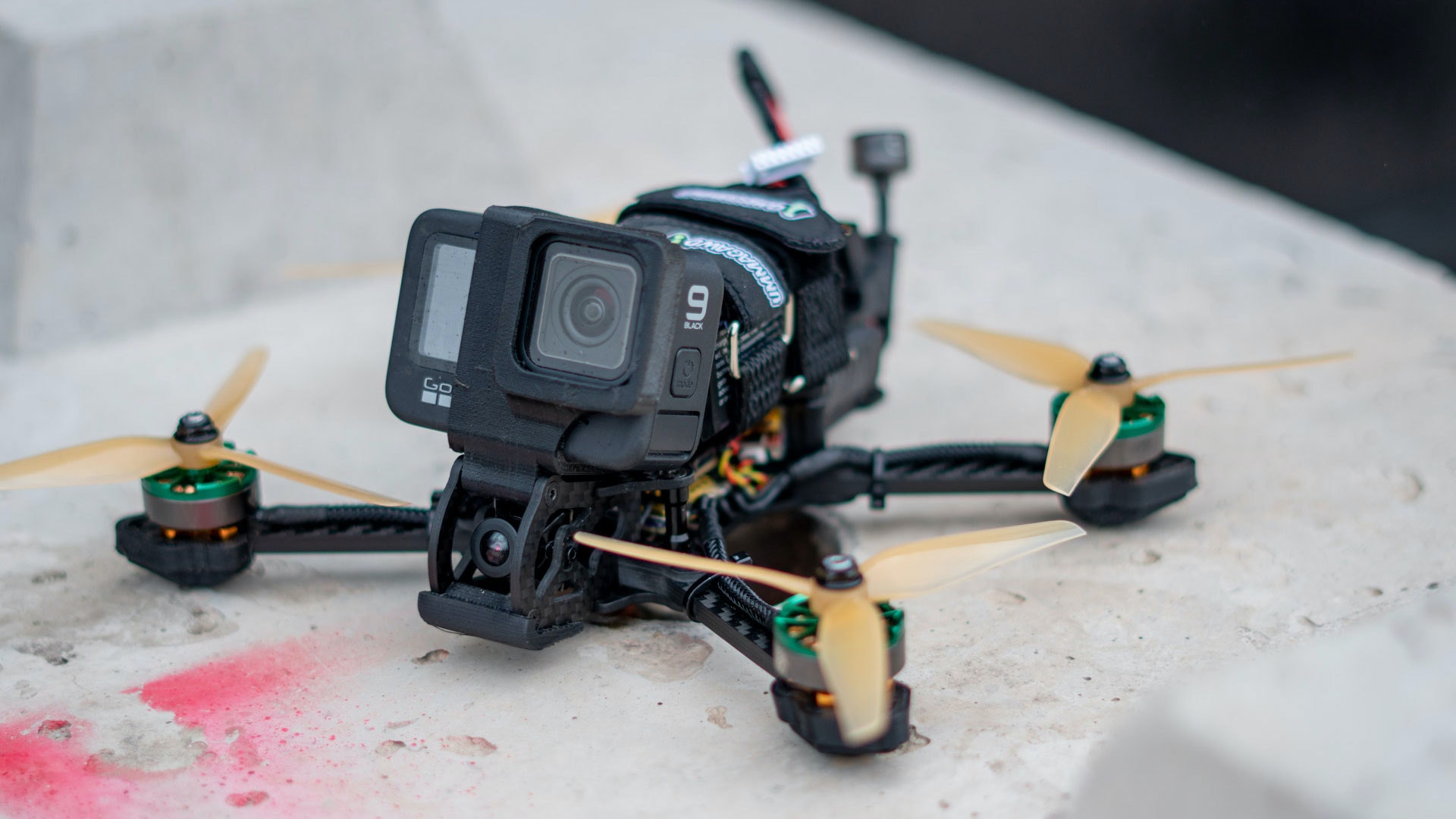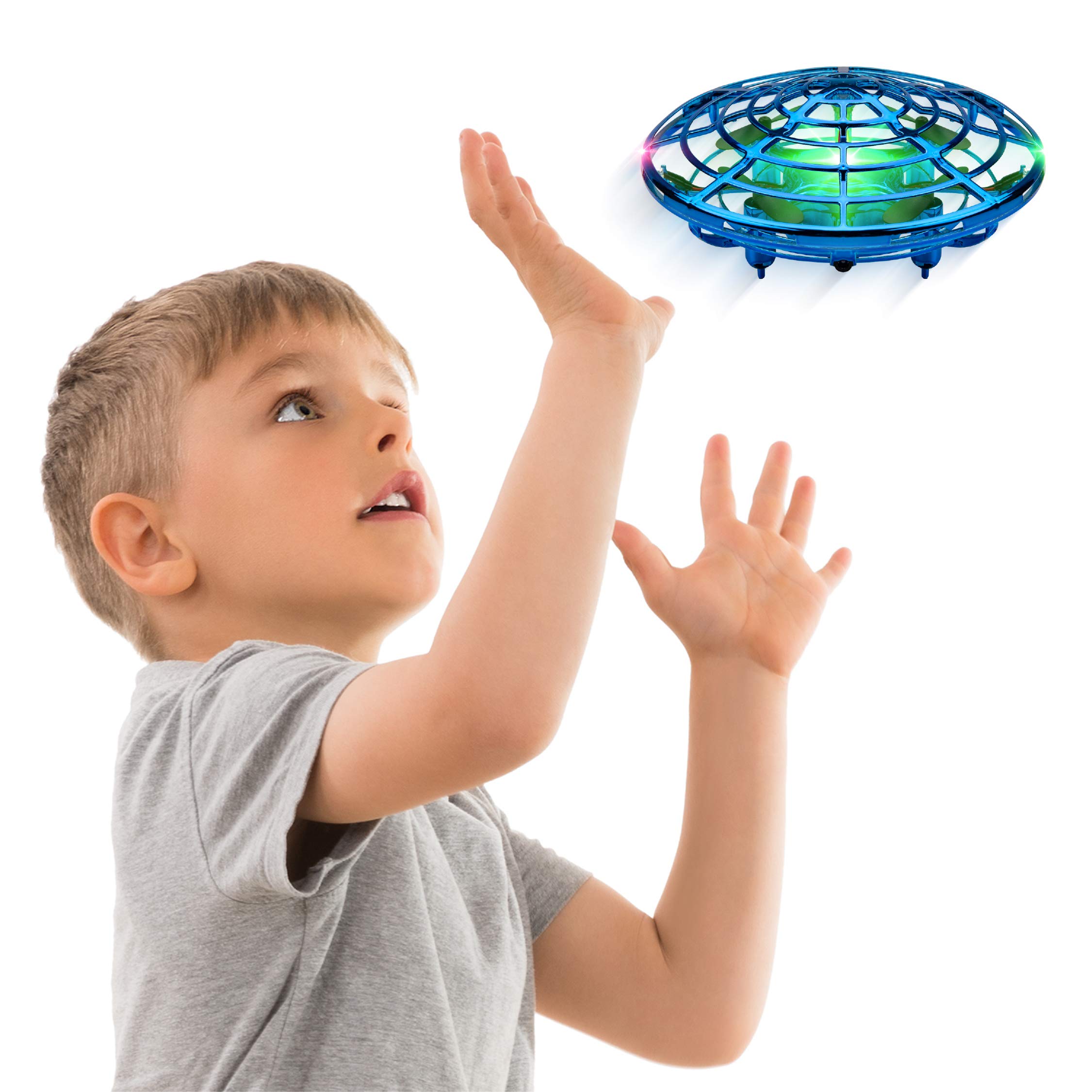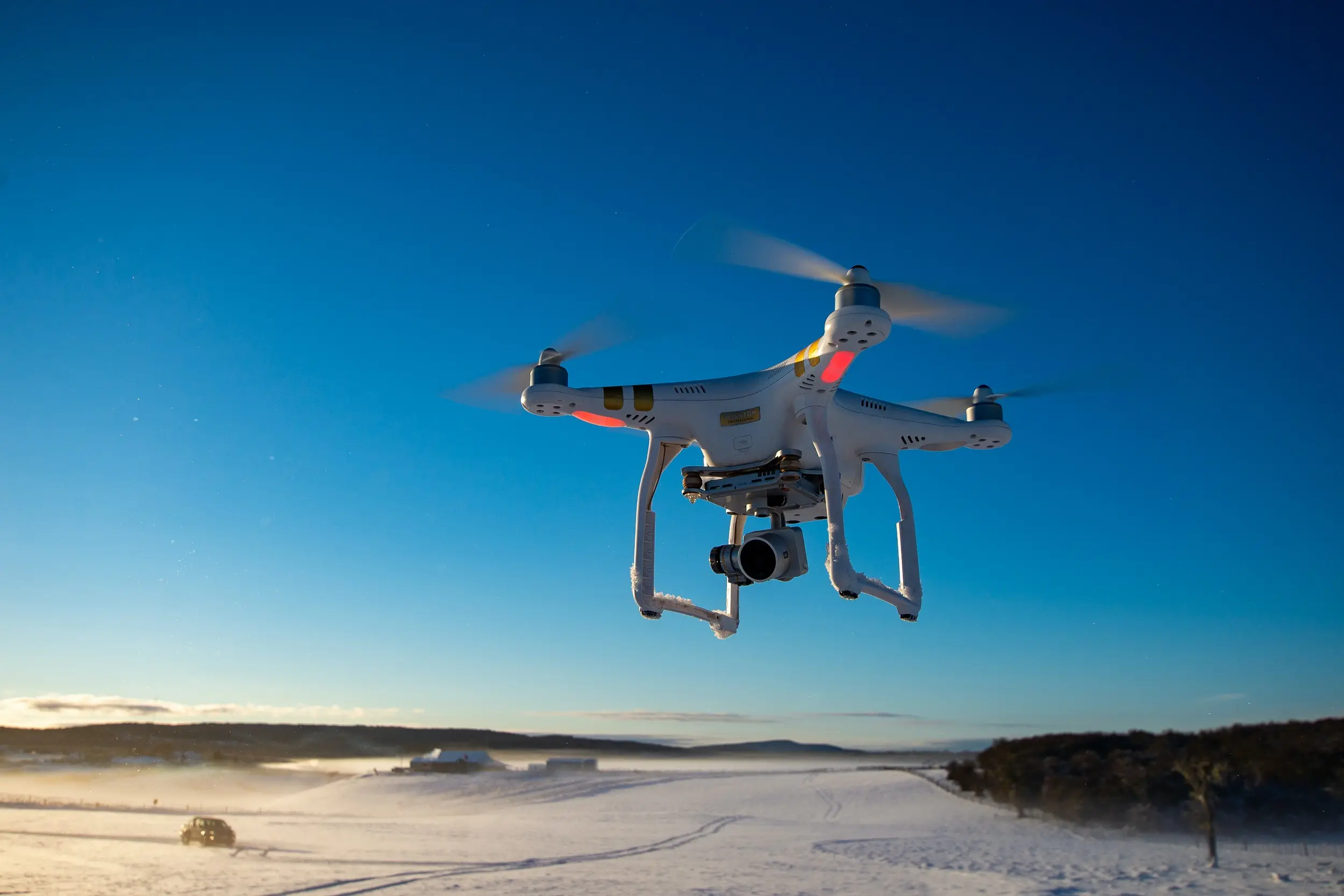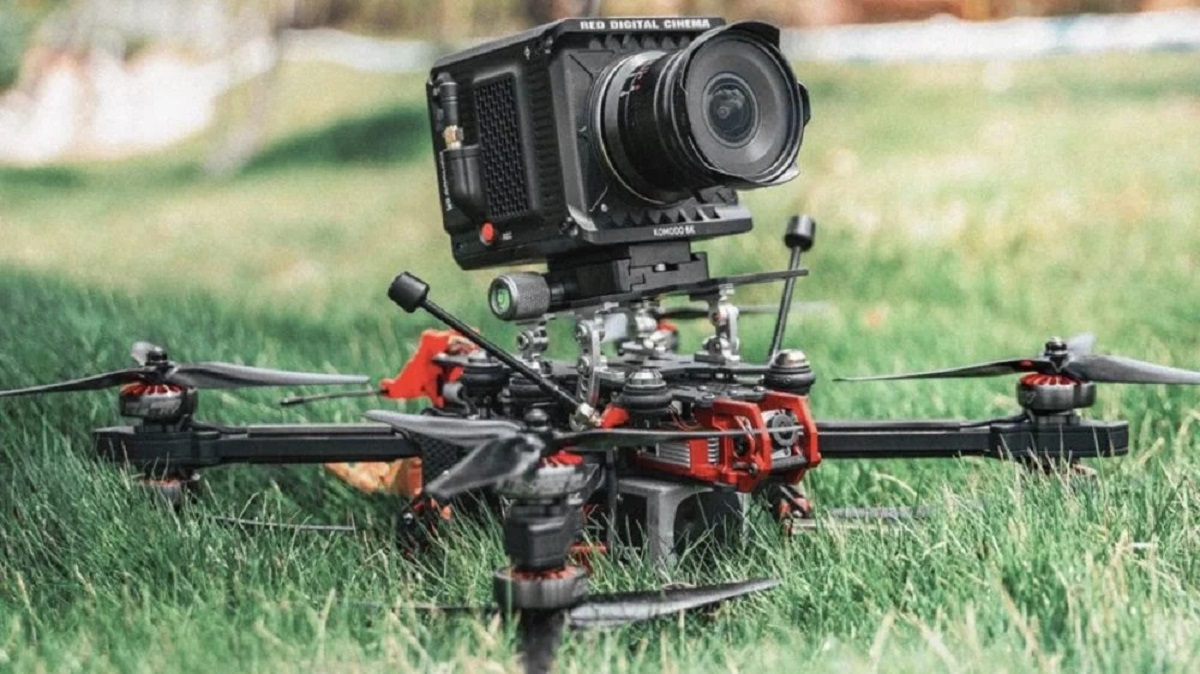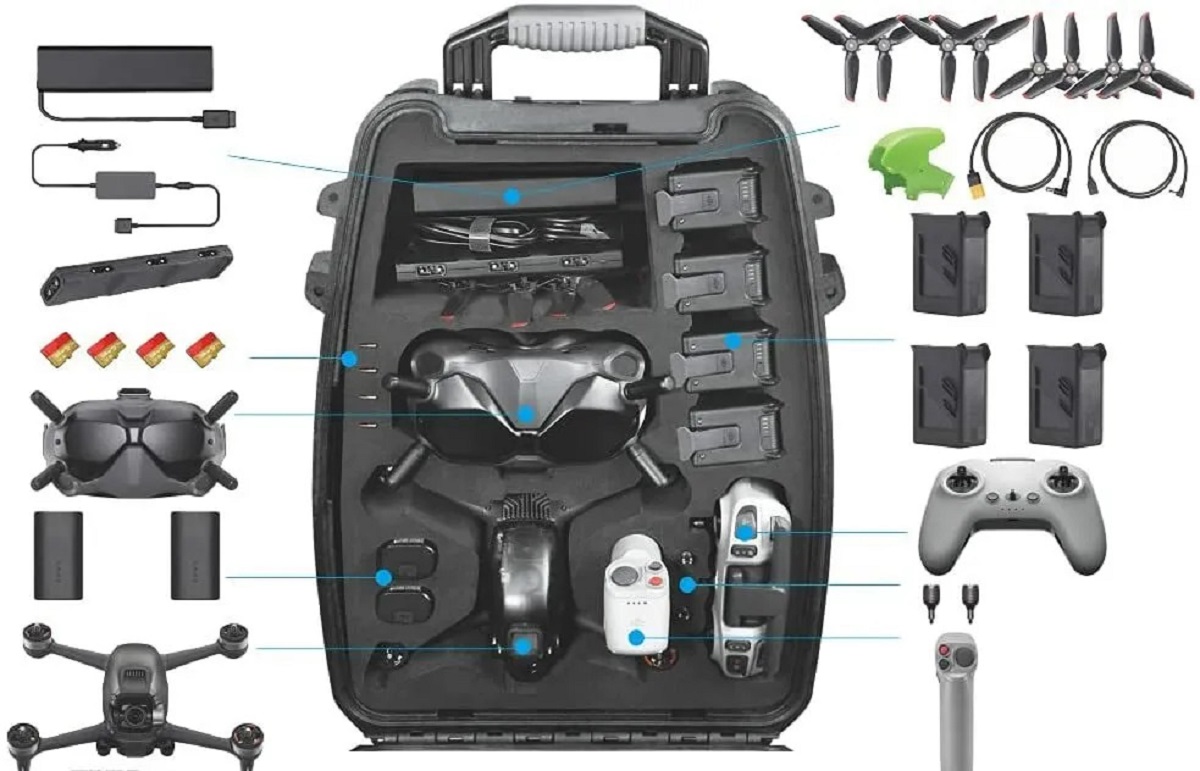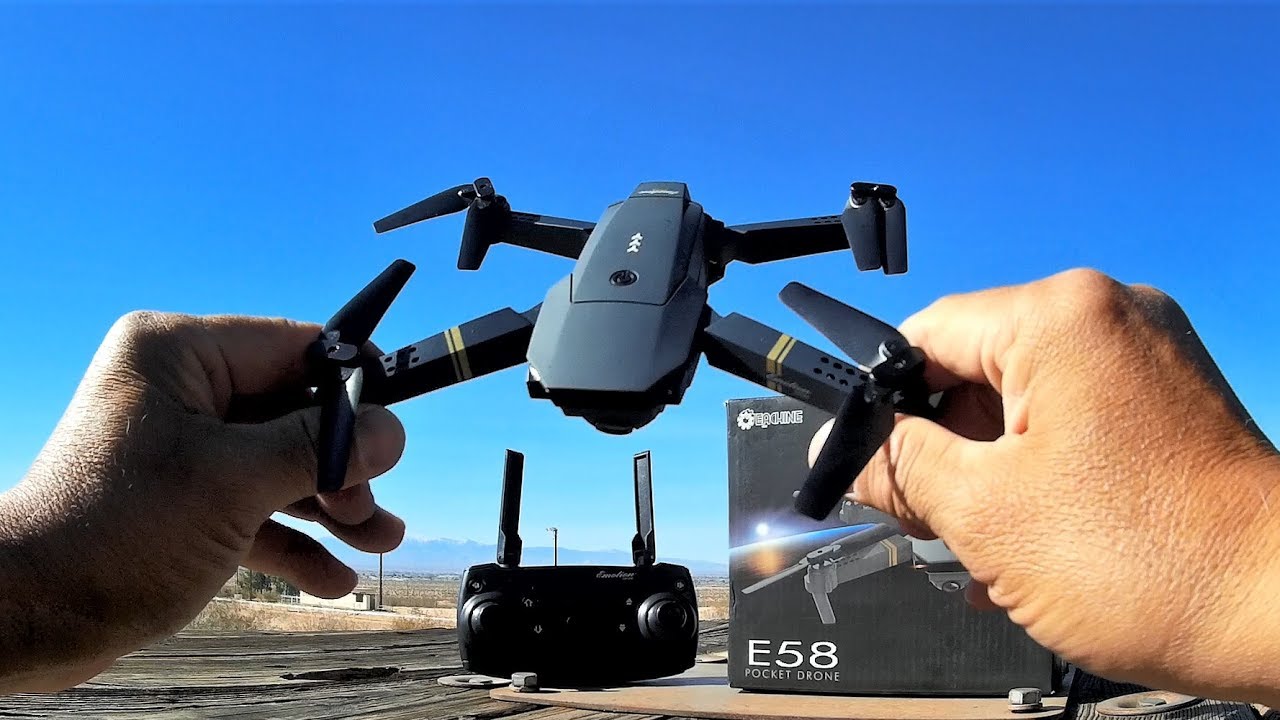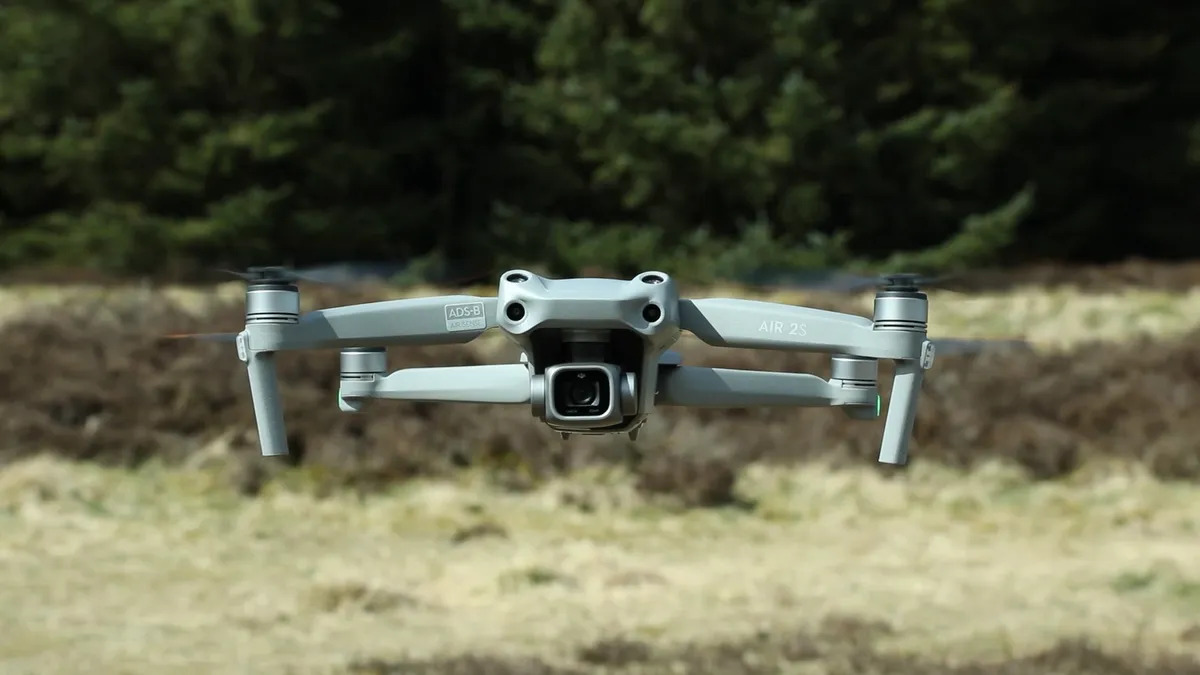What Does FPV Mean on a Drone
If you’re into drones and have come across the term FPV, you may be wondering what it means. FPV stands for “First-Person View,” and it refers to a method of flying a drone where the pilot can see exactly what the drone sees in real-time. This immersive experience is achieved by using a combination of camera technology and wireless transmission.
FPV allows you to see the world from the perspective of your drone as if you were onboard, providing a thrilling and unique flying experience. Whether you’re a hobbyist looking for a new way to experience flight or a professional pilot honing your skills, FPV is an exciting advancement in drone technology.
With FPV, you can explore landscapes, fly through obstacles, and capture amazing aerial footage like never before. It adds an element of excitement and immersion that makes piloting a drone feel like a truly interactive experience.
To achieve an FPV flight, several components work together seamlessly. A camera mounted on the drone captures the video feed, which is then wirelessly transmitted to a receiver. This receiver, often in the form of a set of goggles or a monitor, displays the live video feed to the pilot. By wearing the goggles or looking at the monitor, the pilot is able to see what the drone sees in real-time.
FPV drones are equipped with specialized cameras that are capable of transmitting high-quality video signals in real-time. They typically have wide-angle lenses or even adjustable lenses to provide a larger field of view, giving pilots a wider perspective of their surroundings.
The video feed is transmitted from the drone to the receiver using a video transmitter. The transmitter sends the video signal wirelessly over a designated frequency, usually in the 5.8GHz range. The receiver can be integrated into goggles or a separate monitor, providing a convenient way for pilots to view the live feed.
The display, whether it’s goggles or a monitor, is where the pilot views the live video feed. FPV goggles are popular among drone enthusiasts because they offer a more immersive experience, making it feel as though you’re actually flying. The goggles block out external distractions, allowing you to focus solely on the drone’s perspective.
In summary, FPV stands for First-Person View, and it allows drone pilots to see what their drone sees in real-time. It involves a camera mounted on the drone, a video transmitter to transmit the video feed, and a receiver such as goggles or a monitor to display the live video. FPV enhances the flying experience, giving pilots a unique and immersive perspective that opens up new possibilities for exploration and aerial cinematography.
Introduction
Drones have become increasingly popular in recent years, offering a range of exciting possibilities for enthusiasts and professionals alike. One term that often comes up in the drone community is FPV, which stands for “First-Person View.” If you’re new to the world of drones, you might be wondering what exactly FPV means and how it works.
FPV is a method of flying a drone that gives pilots a unique perspective by allowing them to see what the drone sees in real-time. It provides an immersive experience that adds a whole new dimension to flying. While traditional drone flights involve the pilot maintaining visual contact with the drone from the ground, FPV takes it to the next level by providing a first-person viewpoint as if you were onboard the drone.
With an FPV system, you can explore the skies from the comfort of your own goggles or monitor. It’s like being in the cockpit of the drone, soaring through breathtaking landscapes, and capturing footage from a perspective that was once only possible for professional pilots.
FPV technology has made significant advancements in recent years, making it more accessible and affordable for drone enthusiasts. It has become particularly popular among drone racing and freestyle enthusiasts who crave an adrenaline-pumping experience.
This article will take a closer look at what FPV means on a drone and how it works. We will explore the components of an FPV system and discuss the benefits and applications of FPV technology. Whether you’re a beginner eager to learn more about drones or an experienced pilot looking to take your flying experience to the next level, understanding FPV is essential.
So, buckle up and get ready to dive into the fascinating world of FPV drones. By the end of this article, you’ll have a clear understanding of what FPV means and how it can transform your flying experience.
What is FPV?
FPV, which stands for First-Person View, is a method of flying a drone that provides pilots with a real-time view of what the drone sees. It allows you to experience the thrill of flight from the perspective of the drone itself, as if you were onboard.
Unlike traditional remote-controlled flights, where you have to rely on visual cues from the ground, FPV enables you to see the world from the drone’s point of view. This immersive experience is made possible through the use of a camera mounted on the drone and a wireless video transmission system.
When you fly an FPV drone, the camera captures the live video feed of the drone’s surroundings. This video feed is then transmitted wirelessly to a receiver. The receiver can be a set of goggles or a monitor that you wear or hold, respectively. By looking through the goggles or at the monitor, you can see the live stream of what the drone sees, allowing you to pilot the drone from a first-person perspective.
With FPV, you have total control over the drone’s movements and can navigate through tight spaces, perform aerial maneuvers, and explore challenging terrains with precision. The real-time video feed helps you to avoid obstacles and adjust your flight path accordingly.
In addition to the visual feedback, some FPV systems also provide telemetry data, such as the drone’s altitude, battery level, and GPS coordinates. This information further enhances the piloting experience and gives you valuable feedback and situational awareness during flight.
FPV is not just limited to recreational use, but it also has practical applications in various industries. For example, in the field of cinematography, FPV drones enable filmmakers to capture stunning aerial shots that were once only possible with expensive helicopter rigs. FPV also plays a crucial role in drone racing and freestyle flying, where pilots compete or show off their skills through challenging courses and breathtaking acrobatics.
As FPV technology continues to advance, the quality and capabilities of these systems improve. High-definition cameras, low latency video transmission, and immersive goggles have become standard features in the world of FPV drones, providing an even more realistic and captivating experience.
In summary, FPV (First-Person View) is a method of flying a drone that allows pilots to see what the drone sees in real-time. It involves a camera mounted on the drone that captures the live video feed, which is wirelessly transmitted to a receiver, typically in the form of goggles or a monitor. FPV provides an immersive and exhilarating flying experience, enabling precise control and opening up new possibilities for recreational and professional drone pilots.
How Does FPV Work?
FPV (First-Person View) is a captivating method of flying a drone that allows pilots to see the world from the drone’s perspective in real-time. But how exactly does it work? Let’s take a closer look at the components and the process involved in making FPV possible.
The key components of an FPV system include a camera, video transmitter, video receiver, and a display.
Firstly, the camera is mounted on the drone and captures the live video feed. FPV cameras are specifically designed for this purpose, often featuring wide-angle lenses to provide a broader field of view. Some cameras even come with adjustable lenses to allow pilots to customize the view angle based on their preference.
Next, the video transmitter plays a crucial role in sending the video signal from the drone to the pilot. The transmitter converts the video feed into a wireless signal and transmits it over a designated frequency, usually in the 5.8GHz range. The video transmitter is usually located on the drone itself and can vary in power output depending on the range and signal strength required.
The video receiver receives the transmitted signal and is typically located on the pilot’s side. This receiver can be integrated into FPV goggles or a separate monitor. When using goggles, the receiver provides an immersive experience, making it feel as though you are inside the drone’s cockpit. The receiver efficiently decodes the incoming signal and displays the live video feed on the integrated screen or monitor.
Finally, the display is where the real magic happens. The visual information received by the video receiver is displayed on a screen inside the FPV goggles or the separate monitor. The display can be in the form of a small LCD screen or a high-resolution OLED panel for a more immersive and detailed viewing experience. This is where the pilot can see the live video feed and effectively pilot the drone from a first-person perspective.
An essential aspect of FPV is low-latency video transmission. Latency refers to the delay between when the camera captures the video and when it appears on the display. FPV systems prioritize low latency, ensuring that what the pilot sees is as close to real-time as possible. This is crucial for maintaining a smooth and responsive flying experience, especially during fast-paced drone racing or precise aerial maneuvers.
Overall, the FPV system works by using a camera to capture the video feed from the drone, a video transmitter to wirelessly transmit the signal, a video receiver to receive and decode the signal, and a display to showcase the live video feed to the pilot. This combination of components provides an immersive and real-time flying experience, giving pilots the ability to navigate their drones with precision and see the world from a whole new perspective.
Components of FPV System
To achieve the immersive and real-time experience of FPV (First-Person View), several essential components work together seamlessly. Let’s explore each component in detail:
- Camera: The camera is a crucial component of an FPV system. It is typically mounted on the drone itself and captures the live video feed of the drone’s surroundings. FPV cameras are specifically designed for this purpose, featuring low latency and wide-angle lenses. Some cameras even have adjustable lenses to provide pilots with a customizable field of view. The camera plays a critical role in providing the pilot with a first-person perspective.
- Video Transmitter: The video transmitter is responsible for wirelessly transmitting the video feed from the camera to the pilot’s receiver. It converts the video signal into a wireless format that can be transmitted over a designated frequency. Most FPV systems operate in the 5.8GHz frequency range, ensuring a stable and clear video transmission. The video transmitter is typically located on the drone itself and may vary in power output to accommodate different ranges and signal strengths.
- Video Receiver: The video receiver is a crucial component that receives and decodes the video signal transmitted from the drone. It is usually located on the pilot’s side and can be integrated into FPV goggles or a separate monitor. The receiver efficiently captures the transmitted signal and decodes it into the original video feed. It ensures a seamless and high-quality video transmission, allowing the pilot to see the live video feed in real-time.
- Display: The display is where the pilot views the live video feed from the drone. FPV systems utilize various types of displays, including FPV goggles and separate monitors. FPV goggles are a popular choice as they provide an immersive experience. They usually consist of two small screens, one for each eye, allowing the pilot to perceive depth and gain a true first-person perspective. Alternatively, separate monitors can be used, offering a larger view of the video feed. Display technology continues to advance, with high-resolution screens and OLED panels becoming more common, enhancing the overall FPV experience.
Together, these components form a complete FPV system that enables pilots to view the world from the drone’s perspective. The camera captures the live video feed, the video transmitter wirelessly sends the signal, the video receiver decodes the signal, and the display presents the live video to the pilot. Each component plays a vital role in ensuring a seamless and immersive FPV experience.
It’s important to note that while these components are essential, there are additional accessories and features that can enhance the FPV experience. For example, antenna systems can improve the range and signal strength, and onboard DVR (Digital Video Recorder) can record the FPV footage for later viewing. Pilots can also access OSD (On-Screen Display) systems that overlay flight telemetry data onto the live video feed, providing essential information such as battery voltage, flight speed, and more.
By understanding the components of an FPV system, pilots can choose the right equipment to suit their needs, enhance their flying experience, and fully immerse themselves in the exciting world of FPV drone flight.
Benefits of FPV
FPV (First-Person View) technology offers a range of benefits that have contributed to its immense popularity among drone enthusiasts and professionals. Let’s explore some of the key advantages of FPV flying:
- Immersive Experience: FPV provides an immersive flying experience, making you feel like you’re inside the drone’s cockpit. By wearing FPV goggles or looking at a monitor, you can see exactly what the drone sees in real-time, giving you a sense of being in control of the drone’s movements. It adds an extra layer of excitement and engagement, transporting you to new heights.
- Precision Control: With FPV, you have precise control over the drone’s movements. You can navigate through tight spaces, perform intricate aerial maneuvers, and capture amazing footage with ease. The first-person perspective allows for better depth perception and situational awareness, enabling you to fly with precision and confidence.
- Exploration and Aerial Photography: FPV opens up a world of exploration and stunning aerial photography possibilities. You can fly over breathtaking landscapes, explore remote areas, and capture unique perspectives that were once only accessible to professional filmmakers. FPV drones equipped with high-quality cameras provide an excellent platform for capturing cinematic shots and creating visually captivating content.
- Competitive Racing and Freestyle Flying: FPV has become synonymous with drone racing and freestyle flying. Racing drones equipped with FPV systems allow pilots to compete in thrilling, high-speed races, navigating through challenging courses with precision and agility. Freestyle drones, on the other hand, enable pilots to showcase their creativity and perform jaw-dropping aerial acrobatics, capturing the imagination of spectators.
- Real-Time Feedback and Learning: FPV provides real-time feedback, allowing pilots to learn and improve their flying skills quickly. By seeing the drone’s perspective as it happens, you can identify and correct mistakes, make adjustments, and become a more confident and proficient pilot. Additionally, the ability to review FPV footage later helps in analyzing flights, identifying areas for improvement, and pushing the boundaries of your piloting skills.
- Engaging Entertainment: Whether you are flying for your own enjoyment or in a group setting, FPV provides engaging and entertaining experiences. It enhances the thrill of flying and creates a bond between the pilot and the drone. Watching the live video feed or reviewing FPV footage afterward can be an exciting and shared experience, fostering a sense of community and camaraderie among drone enthusiasts.
These are just a few of the benefits that FPV brings to the world of drones. Whether you’re captivated by aerial photography, adrenaline-pumping racing, or simply want to experience the joy of flight from a new perspective, FPV technology unlocks endless possibilities for creativity, exploration, and personal fulfillment.
Popular FPV Racing and Freestyle Drones
FPV (First-Person View) technology has fueled the rise of FPV racing and freestyle flying, leading to the development of specialized drones designed for these exhilarating activities. Let’s take a look at some of the popular FPV racing and freestyle drones that enthusiasts and professionals enjoy:
- Emax Hawk 5: The Emax Hawk 5 is a popular choice among FPV racers. It features a lightweight and durable frame, powerful motors, and advanced flight controllers that enable quick and agile maneuvering. With its optimized design and top-notch components, the Emax Hawk 5 offers an excellent balance between speed and control, making it a favorite among racers.
- ImpulseRC Alien: The ImpulseRC Alien is highly regarded in the FPV freestyle community. It boasts a unique “X” frame design, which provides exceptional stability and maneuverability during acrobatic flights. The Alien offers flexibility in component placement, allowing pilots to customize their setups to achieve specific performance goals. Its combination of durability, performance, and customizability has made the ImpulseRC Alien a top choice for freestyle pilots.
- Diatone GT-R90: The Diatone GT-R90 is a compact and lightweight FPV racing drone known for its agility and speed. It features a robust carbon fiber frame, powerful motors, and a well-tuned flight controller. The GT-R90’s small size enables it to navigate tight spaces with ease, making it a popular choice for indoor racing. Despite its compact form factor, this drone doesn’t compromise on power or performance.
- Rotor Riot CL1: The Rotor Riot CL1 is a versatile FPV racing drone that caters to both racing and freestyle enthusiasts. It boasts a rigid and durable frame, high-quality components, and smooth flight characteristics. The CL1 offers excellent stability at high speeds, making it a reliable and popular choice for competitive racing. Additionally, its robust frame design allows pilots to push the limits in freestyle flying, performing jaw-dropping aerial maneuvers.
- Armattan Rooster: The Armattan Rooster is a premium FPV freestyle drone designed for advanced pilots seeking exceptional performance. It features a sturdy frame, high-quality electronics, and a well-tuned flight controller. With its powerful motors and top-of-the-line components, the Rooster offers precise control, smooth flight characteristics, and the ability to withstand crashes and hard landings. Freestyle pilots appreciate the Rooster’s versatility and reliability during challenging aerial acrobatics.
- GEPRC Phantom: The GEPRC Phantom is a popular choice for both FPV racing and freestyle flying. It combines an efficient light frame design with high-quality components, resulting in an agile and responsive drone. The Phantom’s aerodynamic layout and powerful motors help achieve impressive speeds, making it a formidable contender on the racing circuit. Its durability and maneuverability also make it a top choice for freestyle pilots looking to push the limits of creativity and precision.
These are just a few examples of popular FPV racing and freestyle drones in the market. It’s important to note that the drone industry is ever-evolving, with new models and improvements continuously being introduced. When selecting an FPV racing or freestyle drone, it’s essential to consider factors such as flight performance, durability, customizability, and personal preferences to find a drone that suits your specific needs and flying style.
Whether you’re chasing the thrills of competitive racing or seeking the freedom of creative acrobatics, these popular FPV drones offer the performance and features desired by both racing and freestyle enthusiasts, ensuring an exciting and dynamic FPV flying experience.
Conclusion
FPV (First-Person View) technology has revolutionized the world of drones, providing pilots with an immersive and thrilling flying experience. By seeing the world from a first-person perspective, FPV enables pilots to explore the skies, capture breathtaking footage, and push the limits of their skills.
In this article, we have explored what FPV means on a drone and how it works. FPV involves a combination of components, including a camera, video transmitter, video receiver, and display. The camera captures the live video feed, which is wirelessly transmitted to the pilot’s receiver. The receiver, often in the form of goggles or a monitor, displays the live video, allowing the pilot to see what the drone sees in real-time.
FPV offers numerous benefits, such as an immersive flying experience, precision control, opportunities for exploration and aerial photography, competitive racing and freestyle flying, real-time feedback and learning, and engaging entertainment. It has opened up new possibilities for drone enthusiasts and professionals alike, providing a unique and captivating way to experience flight.
We also highlighted some popular FPV racing and freestyle drones, showcasing the technological advancements and choices available to pilots. From lightweight and agile racing drones to robust and versatile freestyle machines, these drones cater to different flying styles and preferences, ensuring an exciting and tailor-made FPV experience.
Whether you’re a beginner venturing into the world of drones or an experienced pilot looking to expand your horizons, FPV technology offers endless opportunities for creativity, exploration, and personal fulfillment. By harnessing the power of FPV, you can soar through the skies, capture breathtaking footage, and experience the joy and thrill of flight like never before.
So, take to the skies, put on your FPV goggles or fire up your monitor, and let the world of FPV unfold before your eyes. The possibilities are limitless, and the thrill awaits you in the world of FPV drone flight.







